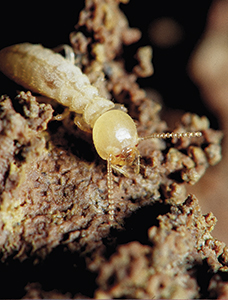When it comes to callbacks, few pests raise as much concern as termites. The advent of modern treatment technologies has helped reduce the frequency of retreatments, but cases still arise when periodic inspections or swarm events indicate termites have reinfested a structure.
A common mistake technicians can make is to just treat again. But simply popping open drill holes in a slab that was previously treated and doing it again is unlikely to solve the problem. Instead, a termite callback requires a re-evaluation of the construction components and the treatment history. Technicians evaluating a termite callback should ask themselves three questions to help determine the best course of action:
1. What was done before? A careful review of treatment records, including a comparison of the labeled treatment volume to what was applied, can provide insight into what the next steps might be. Technicians should double-check inspection diagrams and compare them to the structure. Are construction components missing? Does the diagram match the building?
2. Why didn’t it work? The answer might become obvious when techs visit the site. Were areas left untreated because of stored items or inaccessible areas? Can those areas be treated now? Are there hidden construction elements present or termite-prone areas? Are conducive conditions compromising treatment? Has a new, untreated addition been built?
3. What can be done better this time? The biggest mistake technicians can make is to perform the same treatment and expect a different result. By determining what was done in the past and discerning why it didn’t work, a new treatment plan might become evident. Technicians should take time to think through all the possibilities — even unlikely ones — that might be at the root cause of the infestation. If technicians do this, they’re likely to identify something new that will solve the problem for good.
You can reach Dr. Fredericks, VP of technical and regulatory affairs for the National Pest Management Association (NPMA), at jfredericks@pestworld.org.

Leave A Comment